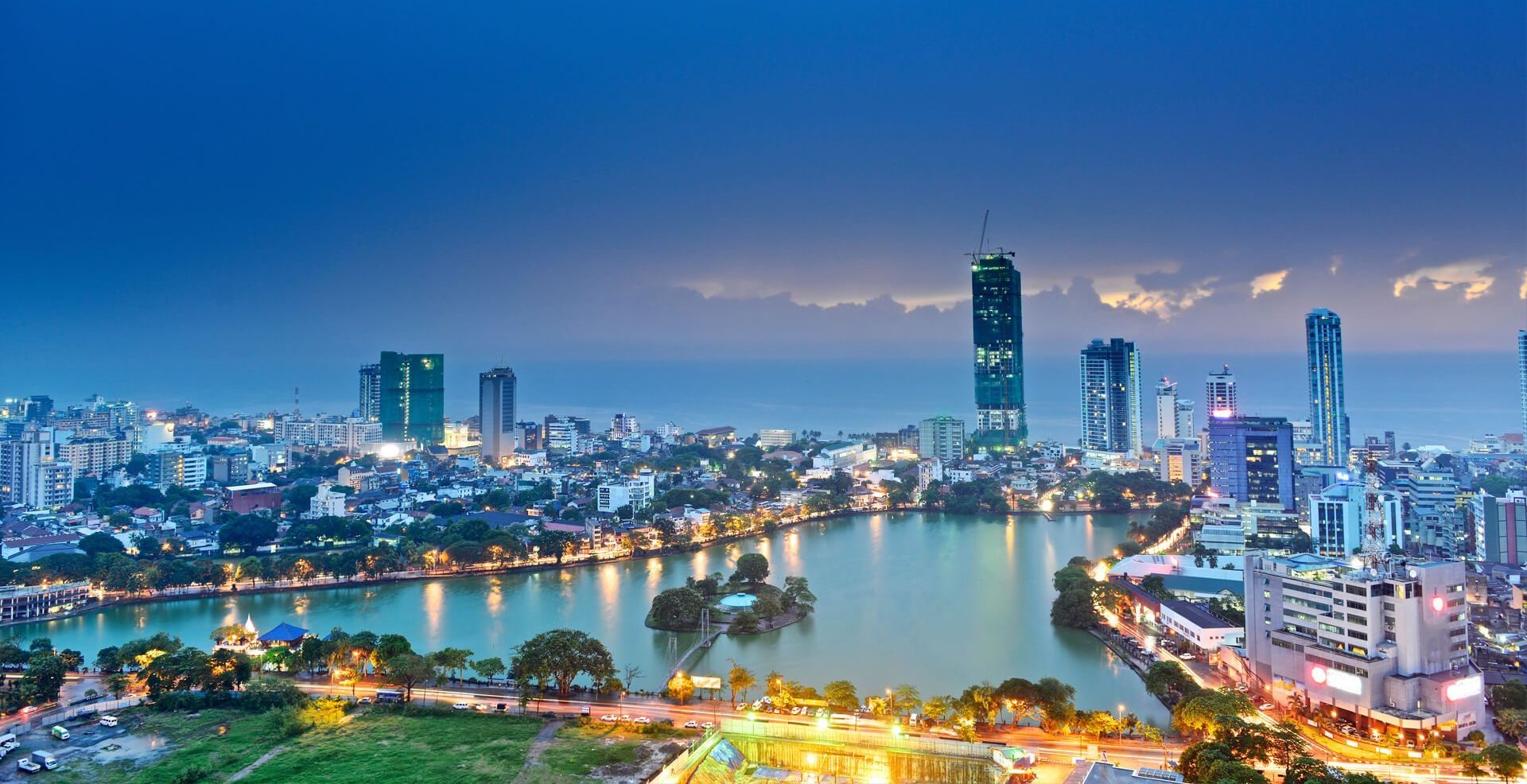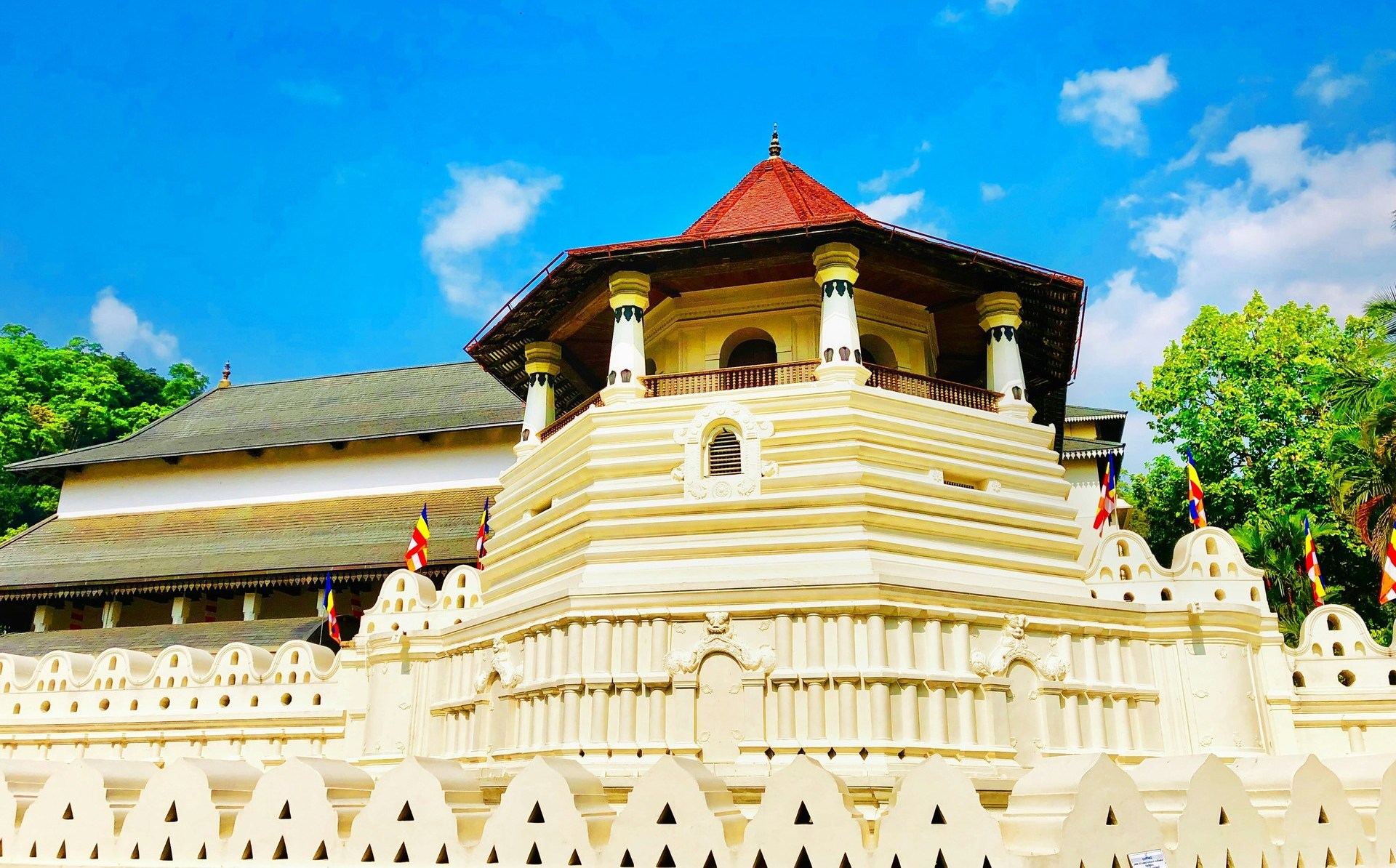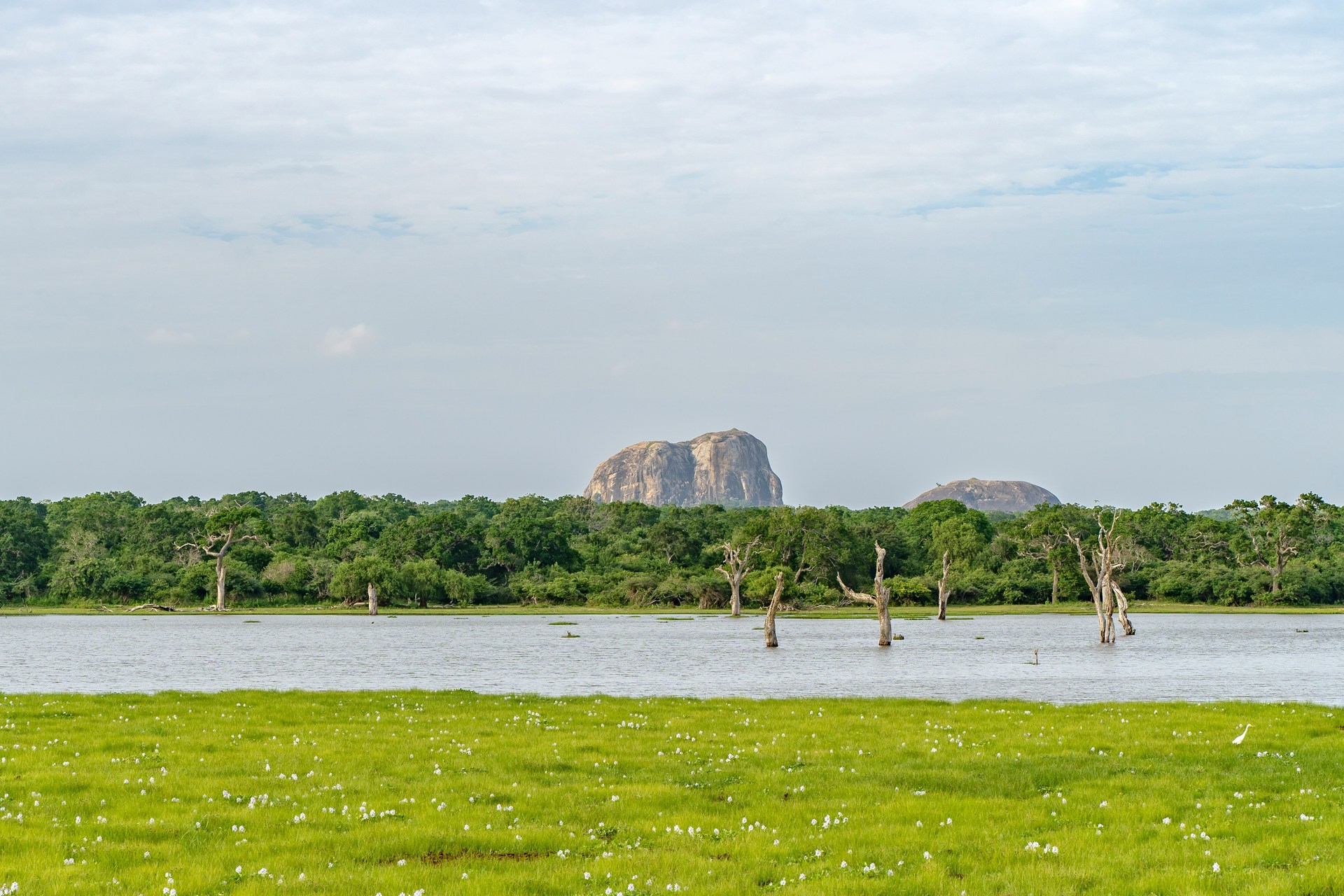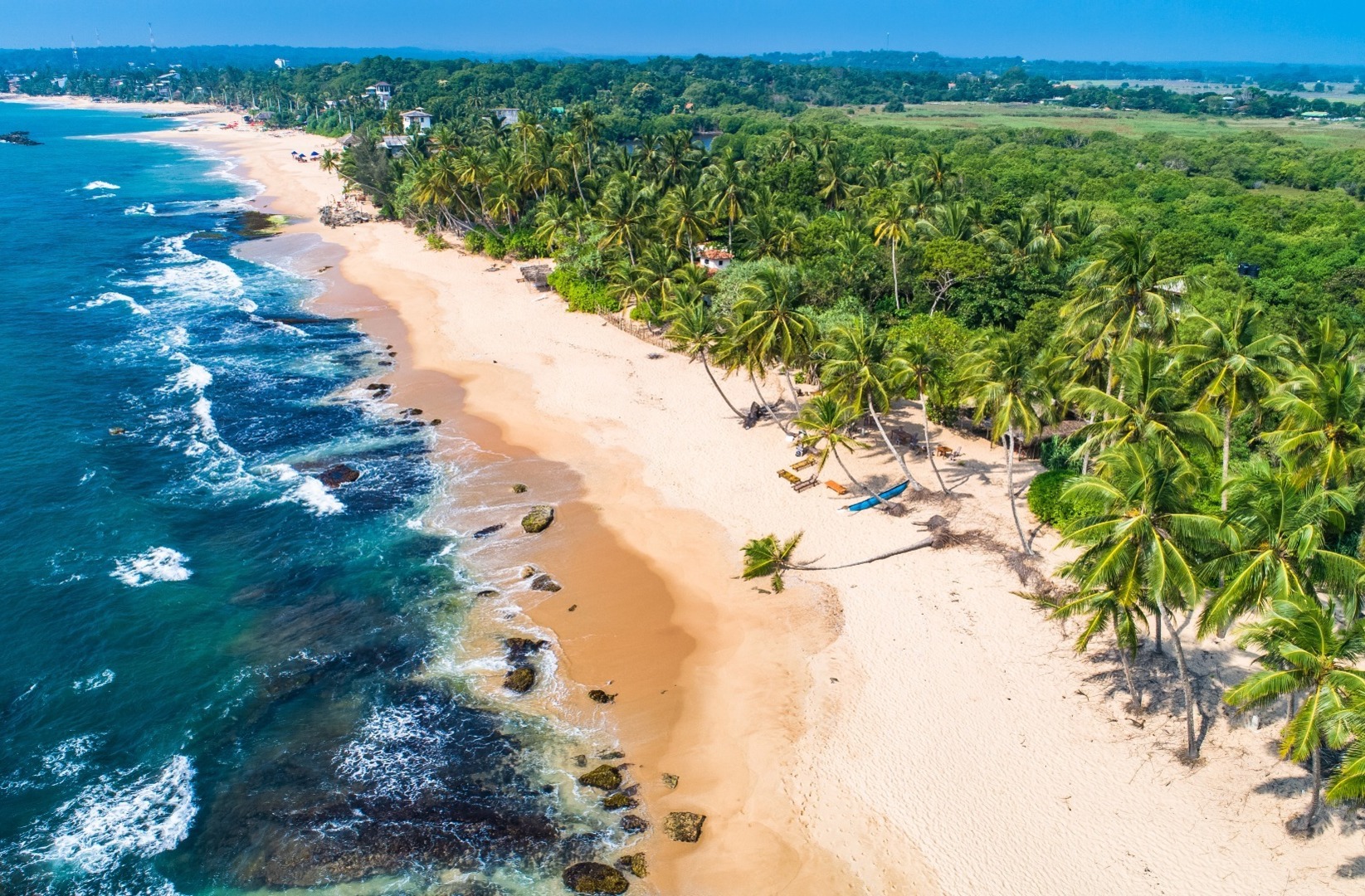The Ultimate Guide to Sri Lanka
Posted on 6th February 2024 at 10:29
Our luxury destination spotlight for February is the stunning 'Gem Of The Indian Ocean', Sri Lanka! Embark on a journey of unparalleled luxury as I unveil the treasures of the island of Sri Lanka, my home.
Renowned for its rich history, diverse landscapes, and warm hospitality, this teardrop-shaped paradise beckons discerning travellers seeking an opulent escape. As a native of this stunning teardrop in the Indian Ocean, let me guide you through the captivating charm of Sri Lanka.
How many days should you spend in Sri Lanka
My recommended duration for a well-rounded experience in Sri Lanka is 14 days. The ideal stay for a trip to Sri Lanka depends on various factors, including your interests, preferred pace of travel and the specific destinations you wish to explore. You will definitely need 2-3 days to get acclimatised and get in the swing of things. Once you are rested and ready to explore, you’ll need a further 5 -7 days seeing the sites and taking everything in, but may need a few days extra if you want to include the game parks in the south. You will then need a few restful days at the end to really enjoy the golden sandy beaches, food and rejuvenate before returning home. We have many 14 day itineraries featured on our website for you to look through.
Best time to visit Sri Lanka
It’s a year-round destination with consistent warmth and lots of sunshine, with temperatures averaging between 31°C at their highest and 22°C at their lowest. Needless to say it’s hotter in coastal areas and the lowlands than it is in the tea plantations and areas with higher altitude. It’s a very tropical country and short bursts of rain can occur at any time of the year, less during the months of January to March. The best time to visit Sri Lanka depends on many factors and I always encourage my clients to visit Sri Lanka to travel during the shoulder period or even during off season so you get so much more for your money and avoid the crowds at popular sites and west coast beaches.
Some factors to take into account when planning a trip to Sri Lanka:
Budget – prices are lower for travel during off peak times (around 15 Dec – 31 March).
Weather patterns - the southwest coast is best for a beach stay between December and April so you avoid the north-eastern monsoons and the east coast is best for a quiet beach stay during the months of May – July.
Festivals – main Kandy Perahera takes place in August and is a great time to visit Kandy to see the traditional dancing and pageantry. April is the time the country celebrates its traditional New Year and the “season” in Nuwara Eliya where there is motor racing and even horse racing in the hills.
Special Interests – Surfing season on the east coast is in May and attracts a lot of surf enthusiasts to the island and the whale watching season to see blue whales is around December – April on the south coast and summer months in the east coast.
What to see and do in Sri Lanka
Colombo
Colombo, where the pulse of the island beats with a unique blend of tradition and modernity. It's truely a melting pot of cultures; from the bustling markets of Pettah to the serenity of Gangaramaya Temple, you'll experience tht coexistence of various ethinicities, religions and traditions. The city's rich history of landmarks, including the Old Parliament Building and the Dutch Hospital, each tell you a story of a bygone era.

Nuwara Eliya
Nuwara Eliya is synonymous with the sprawling emerald-green tea plantations that carpet the hillsides. Take a leisurely stroll through the meticulously manicured fields, breathe in the crisp mountain air, and witness the artistry of tea pluckers at work. Engage in guided tours of renowned tea factories, where the fragrant Ceylon tea is crafted, offering a sensory journey through the region's most celebrated export. This part of the island is adorned with cascading waterfalls that add to its ethereal beauty. Witness the mesmerizing beauty of Ramboda Falls and Devon Falls as they gracefully descend from the mist-shrouded hills, creating a symphony of nature's serenity.

Kandy
At the heart of Kandy lies the revered Temple of the Tooth Relic (Sri Dalada Maligawa), a UNESCO World Heritage Site. Home to the sacred tooth relic of Lord Buddha, this spiritual sanctuary draws pilgrims and visitors alike. Immerse yourself in the rhythmic beats of traditional drummers during the awe-inspiring pooja ceremonies, experiencing the spiritual essence that defines Kandy. Embark on one of the most picturesque train journeys from Kandy to Ella or Nuwara Eliya. As the train winds through the lush landscapes, you'll witness breathtaking views of mist-covered hills, tea plantations, and charming villages. This scenic ride is a quintessential Sri Lankan experience.

Yala National Park
Prepare for an exhilarating adventure as you embark on a safari through the wilderness of Yala. Home to a plethora of wildlife, including the elusive Sri Lankan leopard, elephants, sloth bears, and a myriad of bird species, Yala offers an unrivaled safari experience. The thrill of spotting these majestic creatures in their natural habitat is an encounter that will stay etched in your memory. For bird enthusiasts, Yala is a haven with over 200 bird species, including colorful endemic birds like the Sri Lanka Junglefowl.

What to eat in Sri Lanka
The island's culinary tapestry is a vibrant blend of flavors, spices, and traditions. Here's a guide to some must-try dishes that will undoubtedly tantalise your taste buds and provide a true taste of Sri Lanka.
Rice and Curry
A quintessential Sri Lankan meal, "rice and curry" is the heart of our cuisine. Enjoy fragrant Basmati or red rice accompanied by an array of curries – from spicy chicken or fish curry to mild dhal curry, tempered with aromatic spices like cinnamon, cardamom, and cloves.
Hoppers (Appa)
A beloved breakfast item, hoppers are bowl-shaped pancakes made with fermented rice flour and coconut milk. You can enjoy them plain or with a sunny-side-up egg nestled in the center. For a crispy edge, try the "egg hopper" or the sweeter "string hopper" version.
Kottu Roti
Prepare your senses for the rhythmic clang of metal blades on a griddle, heralding the preparation of kottu roti. This popular street food consists of chopped flatbread stir-fried with an assortment of ingredients like vegetables, meat, and spices. It's a symphony of textures and flavors.
String Hoppers (Indi Appa)
These delicate, steamed rice noodle nests are a delightful addition to any meal. Often served with a side of coconut milk or a spicy curry, string hoppers showcase the versatility of Sri Lankan cuisine.
Pol Sambol
No meal is complete without a generous helping of pol sambol. This fiery coconut condiment, made with grated coconut, red onions, chili, and lime, adds a burst of flavor to any dish. It's the perfect accompaniment for rice and curry or hoppers.
Lamprais
Experience a culinary heritage left by the Dutch Burghers with lamprais. This dish features rice cooked in stock, accompanied by a variety of meats, such as chicken, beef, or fish, and an array of sambols, all wrapped and baked in a banana leaf for a unique, flavorful meal.
Seafood Delights
Being an island, Sri Lanka offers an abundance of fresh seafood. Indulge in mouthwatering prawn or crab curries, grilled fish, or the delectable fish ambul thiyal – a tangy and spicy fish preparation cooked with goraka, a dried fruit that imparts a distinct flavor.
Roti and Parippu
Experience the comfort of Sri Lankan roti, unleavened flatbread, often paired with a hearty dhal curry. The combination of soft roti and creamy dhal creates a wholesome and satisfying meal.
Wambatu Moju
Savour the sweet and sour goodness of wambatu moju, a dish made with eggplant (wambatu) that's pickled and cooked to perfection. It's a delightful side dish that adds a burst of flavor to your plate.
Kiribath and Kavum
End your culinary journey on a sweet note with kiribath, a creamy rice pudding often served during festive occasions, and kavum, a deep-fried sweet made from rice flour and treacle.
Where to stay in Sri Lanka
98 Acres Resort & Spa
Situated on a 98-acre tea estate in Ella in Sri Lanka, 98 Acres Resort & Spa blends well with nature and is an ideal option for leisure travellers and nature enthusiasts looking for a relaxing getaway surrounded by breathtaking natural beauty. The resort offers a number of charming chalets, all of which feature modern amenities, kitchens and private pools. During their stay, guests can enjoy dining at the on-site restaurant, while refreshing drinks are available at the bar. There are a number of activities available, including mountain biking, bird watching, and hiking.
Anantara Peace Haven Tangalle Resort
Situated in Tangalle, the Anantara Peace Haven Tangalle Resort rests along a secluded stretch of Sri Lanka’s southernmost coastline. Set amidst a coconut plantation and golden crescent shores with glorious Indian Ocean views, Anantara Peace Haven Tangalle Resort offers a naturally exclusive hideaway for exotic beach life in a peaceful world. The resort offers 152 rooms, including pool villas with Nespresso machines, Wi-Fi access, separate showers and bathtubs, and private terraces. Guests can enjoy delicious Sri Lankan and international cuisine at several on-site dining facilities. Additional amenities include a spa and a tennis court.
Mount Lavinia Hotel
One of the last enclaves of the old orient, Mount Lavinia Hotel offers a selection of 210 rooms inclusive of suites; each offering a unique experience in comfort and sophistication. The graceful elegance of a bygone era is still retained in the highly appointed rooms and suites of the Governor's Wing, constructed in the 1930's as an addition to the original colonial building dating back to the 1800's. Enhanced with the natural warm glow of solid wood and the calming embrace of natural shades, the Governor's Wing provides a regal and secluded haven of splendid quietude for the discerning traveller.
Getting around Sri Lanka
Navigating the diverse landscapes of Sri Lanka is an adventure in itself! For short distances and local exploration, tuk-tuks are the go-to mode of transportation. Negotiate the fare before starting your journey or opt for tuk-tuk apps for transparent pricing.
Embark on a scenic train journey through the lush landscapes of Sri Lanka. The train system connects major cities like Colombo, Kandy, and Ella, offering breathtaking views of tea plantations, mountains, and valleys. First-class and observation carriages provide a more comfortable experience.
For flexibility and comfort, consider renting a car with a driver. This option allows you to explore at your own pace while enjoying the expertise of a local guide. The road network is generally well-maintained, and a private driver ensures a stress-free travel experience. See a previous blog post about self-driving through Sri Lanka here.
Whichever mode of transportation you choose, each journey in Sri Lanka promises to be an adventure, filled with scenic landscapes, cultural discoveries, and warm encounters with the locals.
I hope this guide well help you with your trip to Sri Lanka and know that this is just the tip of the iceburg! Sri Lanka is such a wonderful place for couples, families, solo trips - it has something for everyone!
If this blog has inspired you, contact us now to book your Sri Lankan getaway on 01442617777 or email us on holidays@tailoredjourneys.co.uk
We look forward to hearing from you!

Share this post:


